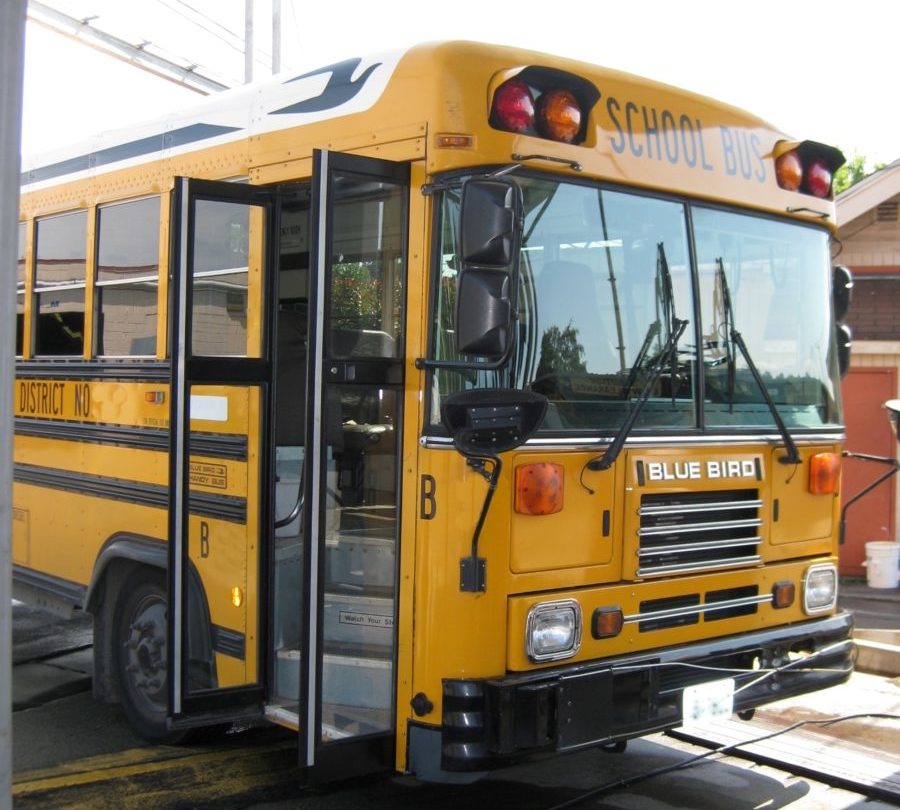In October 2008, NHTSA published the “Federal Motor Vehicle Safety Standards; Seating Systems, Occupant Crash Protection, Seat Belt Assembly Anchorages, School Bus Passenger Seating and Crash Protection” final rule, the last components of which will take effect on October 21, 2011. Important among these is the requirement for new buses of 10,000 pounds gross vehicle weight or less to be equipped with lap-shoulder belts, rather than lap-only belts, in all positions.
Having access to lockable, standardized lap-shoulder seat belts on these smaller buses may make installation of conventional CRs easy on most buses so equipped. However, caregivers and advocates are often surprised to learn that best practice is to NOT use a booster on a school bus, even when a lap-shoulder belt is available and the child would normally ride in a booster in the family vehicle.
The reason for this is that, on a school bus seat, the shoulder belt height is adjustable to fit the smaller child size and the seat depth dimension is much smaller to fit shorter legs. Essentially, the bus seat is pre-scaled to suit a child’s dimensions, whereas a passenger vehicle seat is not. Remembering the 5-Step Test to determine seat belt readiness, it is easy to imagine why this difference in seats is important: a child does not have to grow nearly as tall to have his legs bend comfortably on the shallower lower cushion of a school bus, and the shoulder belt height adjuster will make the shoulder belt run appropriately across his shoulder at a much younger age (assuming that the belt is properly adjusted when buckling up).
When the lap-shoulder belt already aligns properly with the body, a booster is not necessary. Also, adding a booster unnecessarily could detract from safety. A booster with a back would position the child’s torso closer to the seat ahead, and a child is safer sitting lower on a bus seat, with the head down within the padded seating area. Also, a booster must fit entirely on the seat, and some models may overhang on a shallow school bus seat.
Charlie Vits of IMMI, a major manufacturer and pioneer of school bus seating with integrated lap-shoulder belts, points out that IMMI’s SafeGuard bus seats with lap-shoulder belts have been tested and certified to be compliant with FMVSS 213 requirements for built-in boosters (and are labeled as such). As is the case with all currently marketed bus seats with lap-shoulder belts, the shoulder belt can be moved up and down so that it can be adjusted to have the correct belt fit geometry for various sizes of students.
School bus seating with lap-shoulder belts is typically made to start fitting at around the size of an average kindergartner. For children too small to fit on the bus seat properly, rather than a booster, pupil transportation professionals should plan to provide a child safety restraint system (CSRS) for the students, as may be the case for children being transported to and from Head Start programs. In fact, under federal rules governing Head Start transportation (CFR 45 Part 1310), all children must be properly restrained in an age- and weight-appropriate CSRS (excluding boosters in school buses equipped with adjustable shoulder-height lap-shoulder belts).
As in any circumstance, best practice is to assess the child for fit when deciding whether to use a CSRS or a seat belt, rather than just relying on age or weight. In the case of school buses, traditional CRs, vest products, bus seats with a built-in harness, or bus-specific CSRS like the SafeGuard STAR or BESI Pro Tech are available and preferred over boosters for children not meeting proper fit of a seat belt.
Resources:
NHTSA website:
The original final ruling is in docket # NHTSA-2008-0163-0003.
The updated rule is in docket # NHTSA-2008-0163-0018.
The SafetyBeltSafe USA 5-Step Test.

